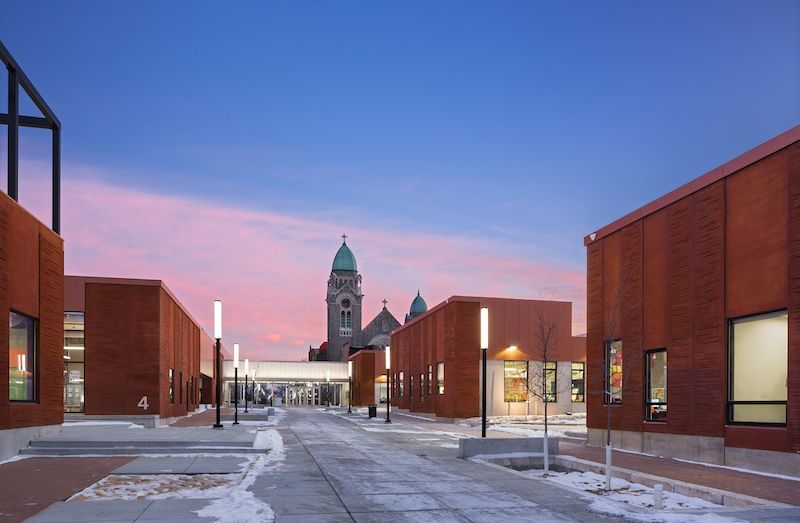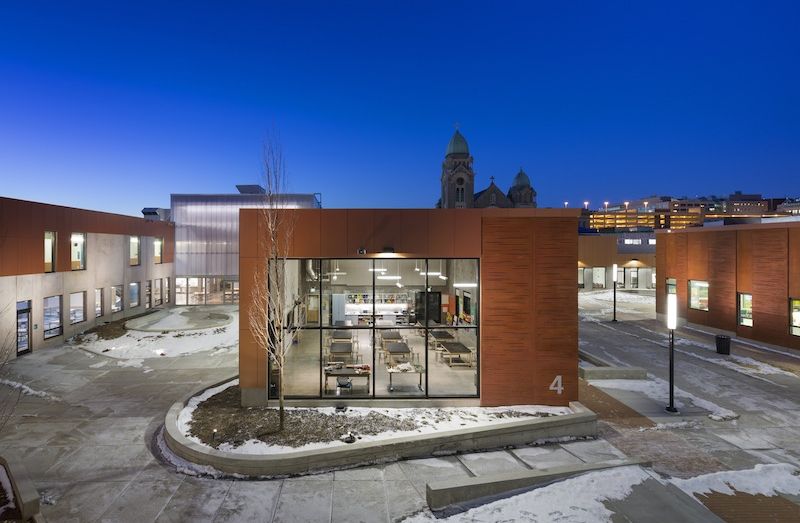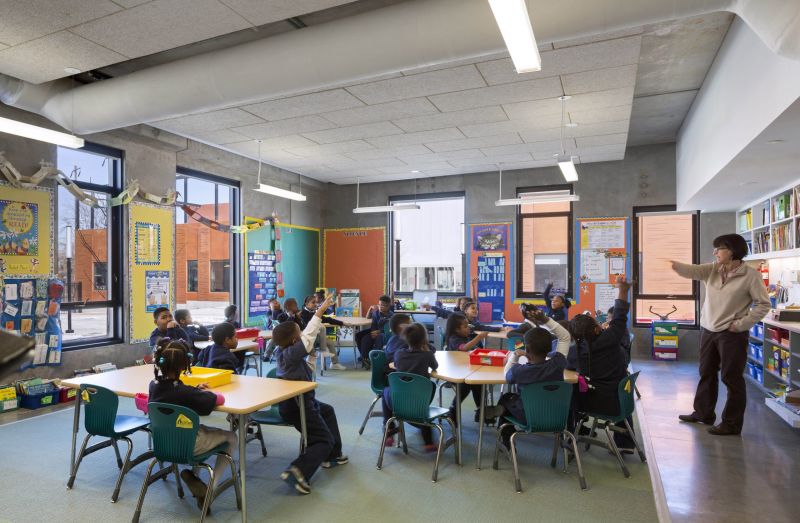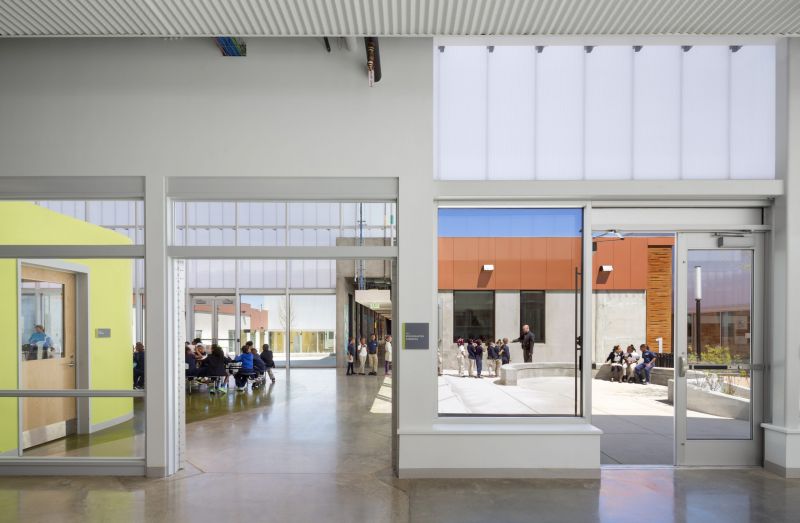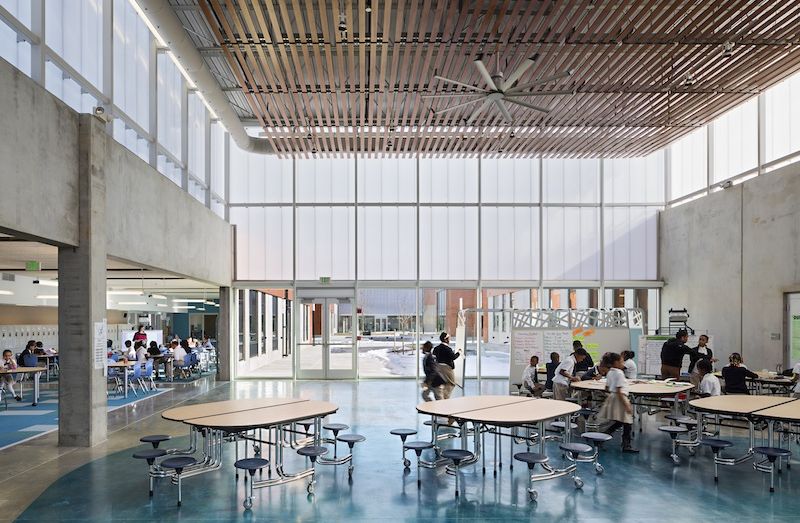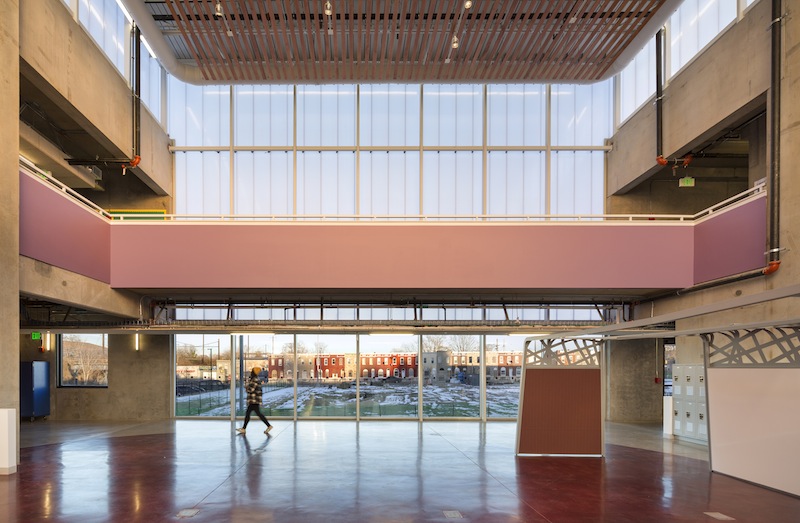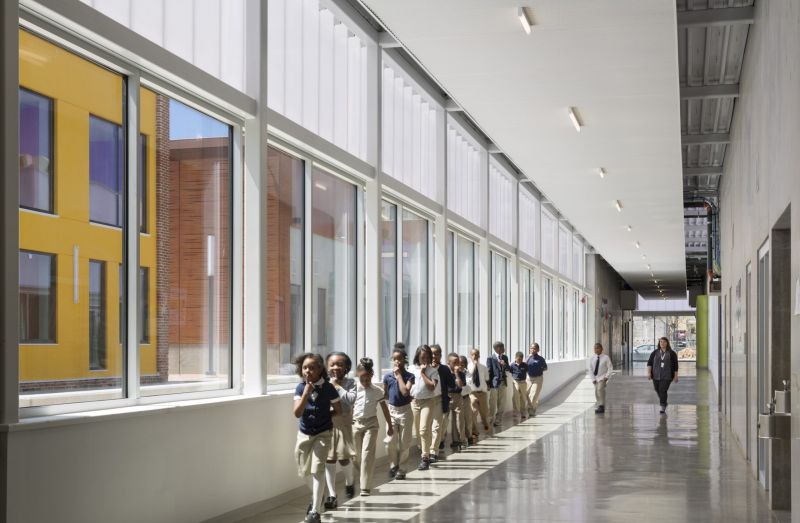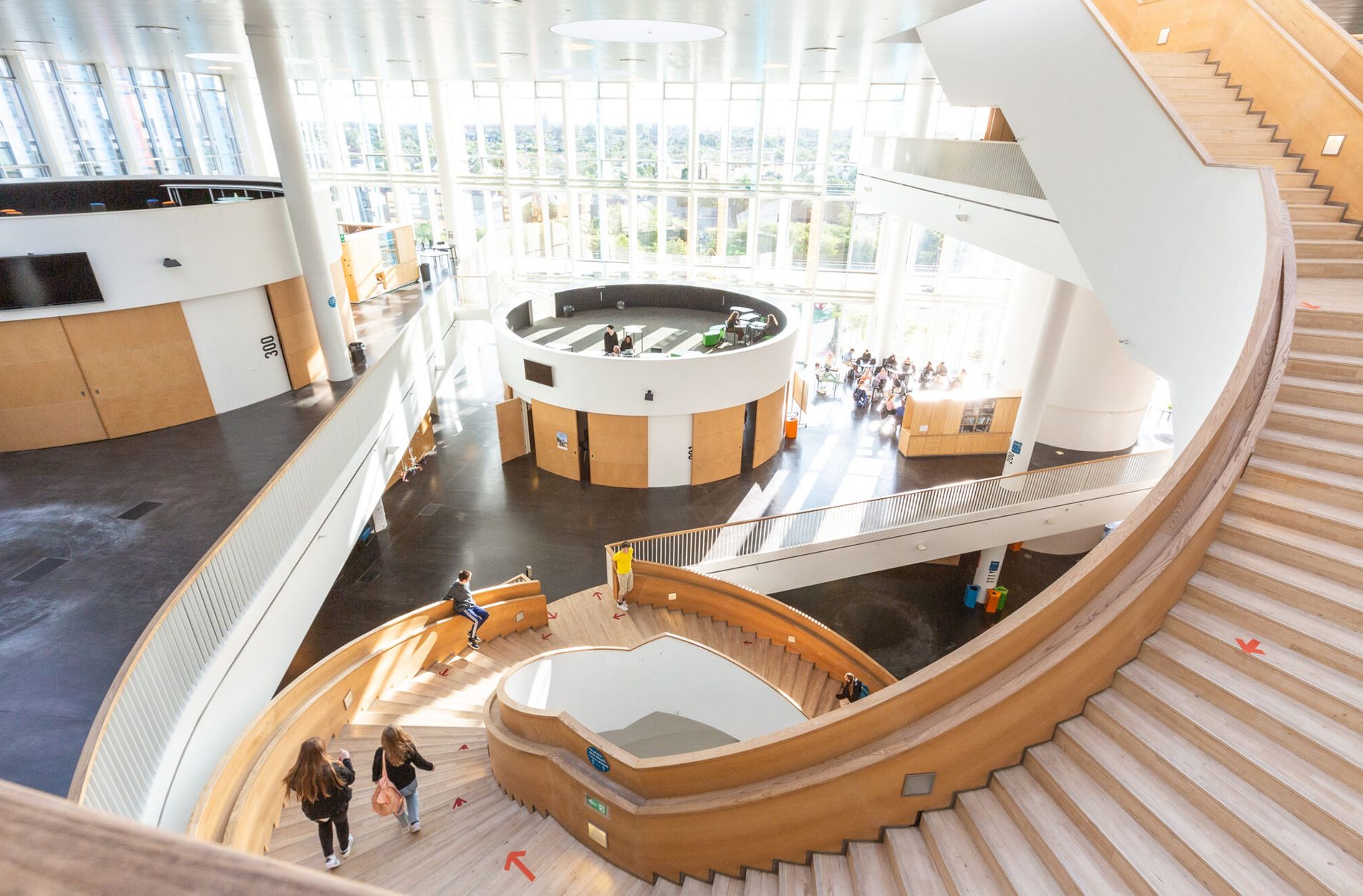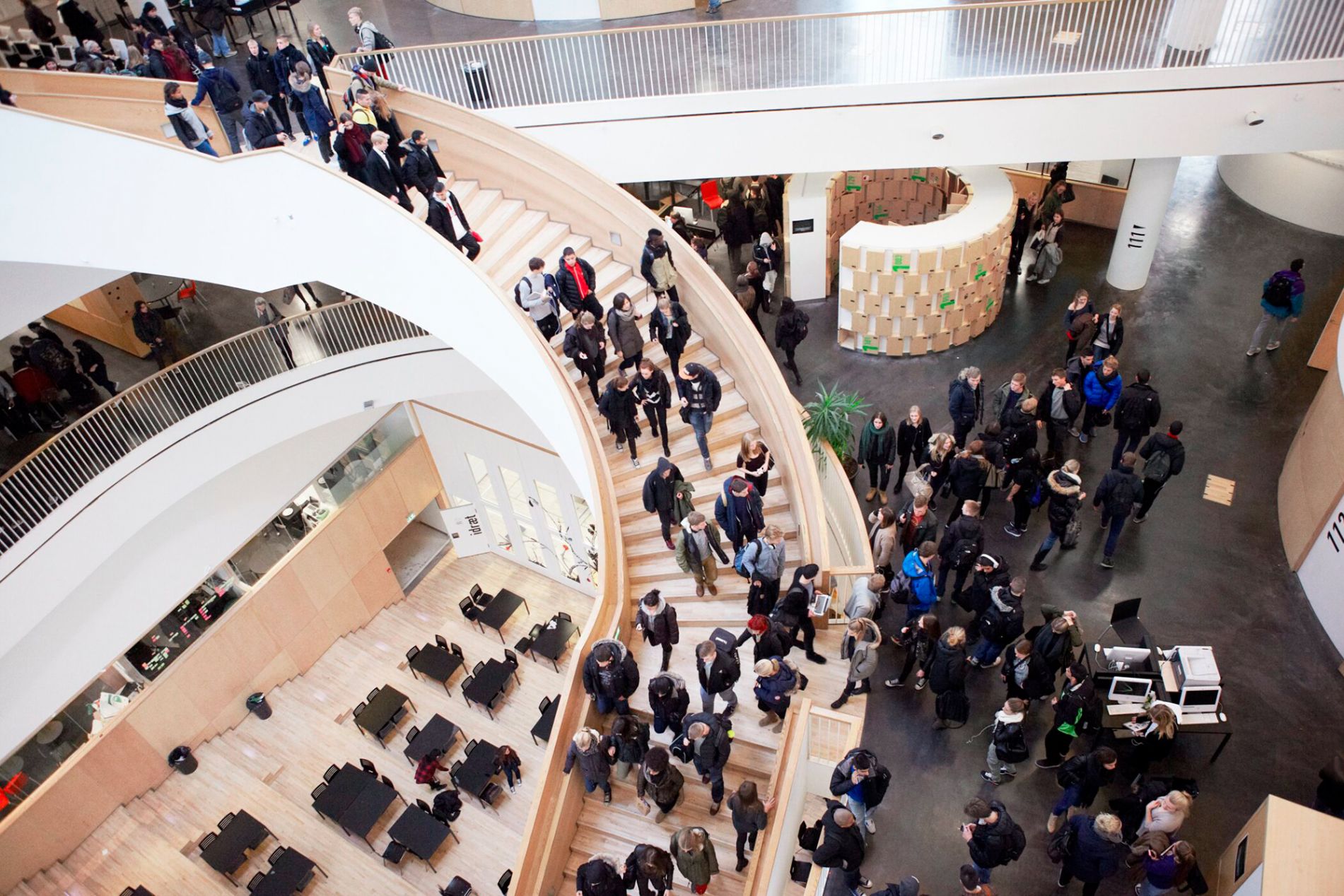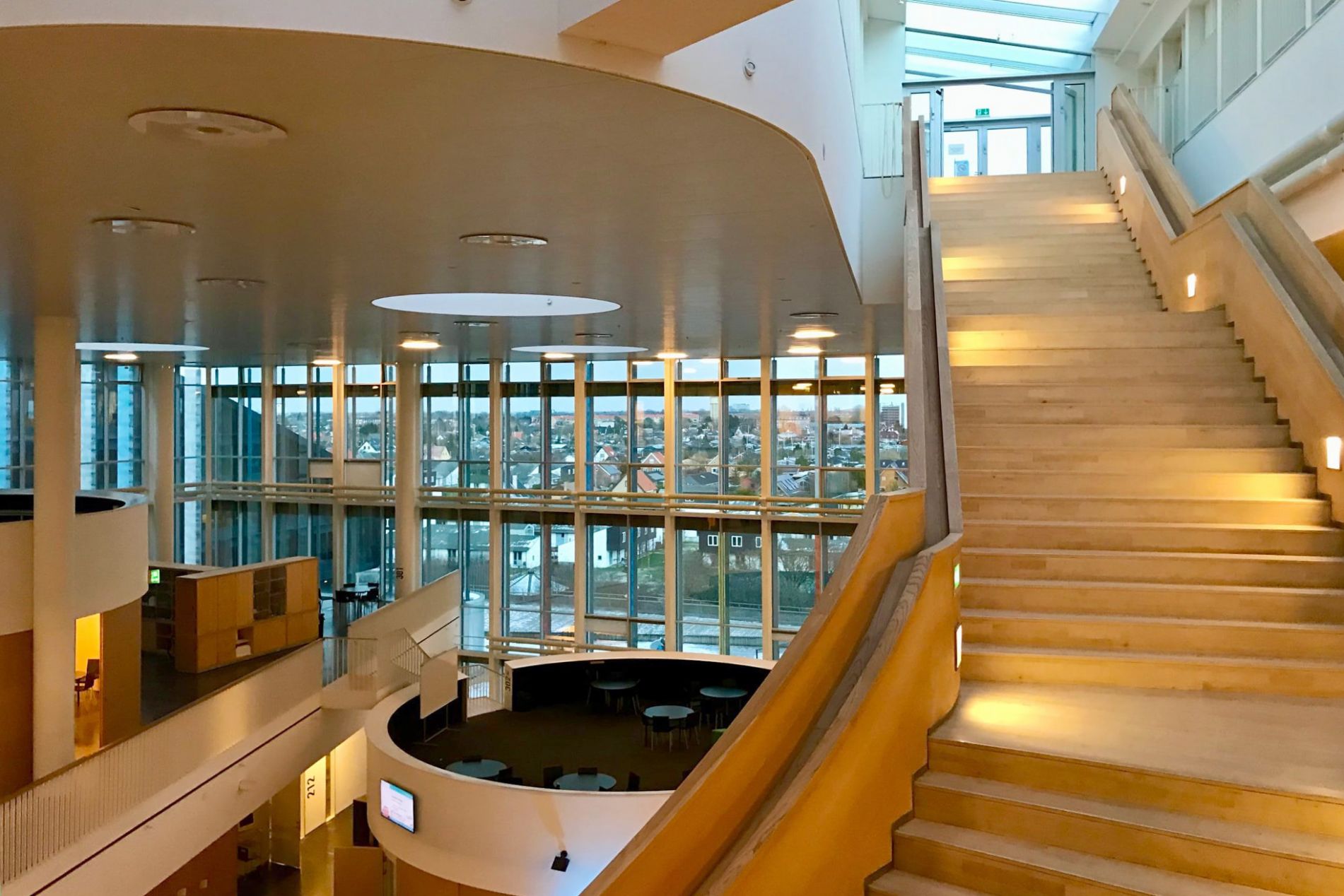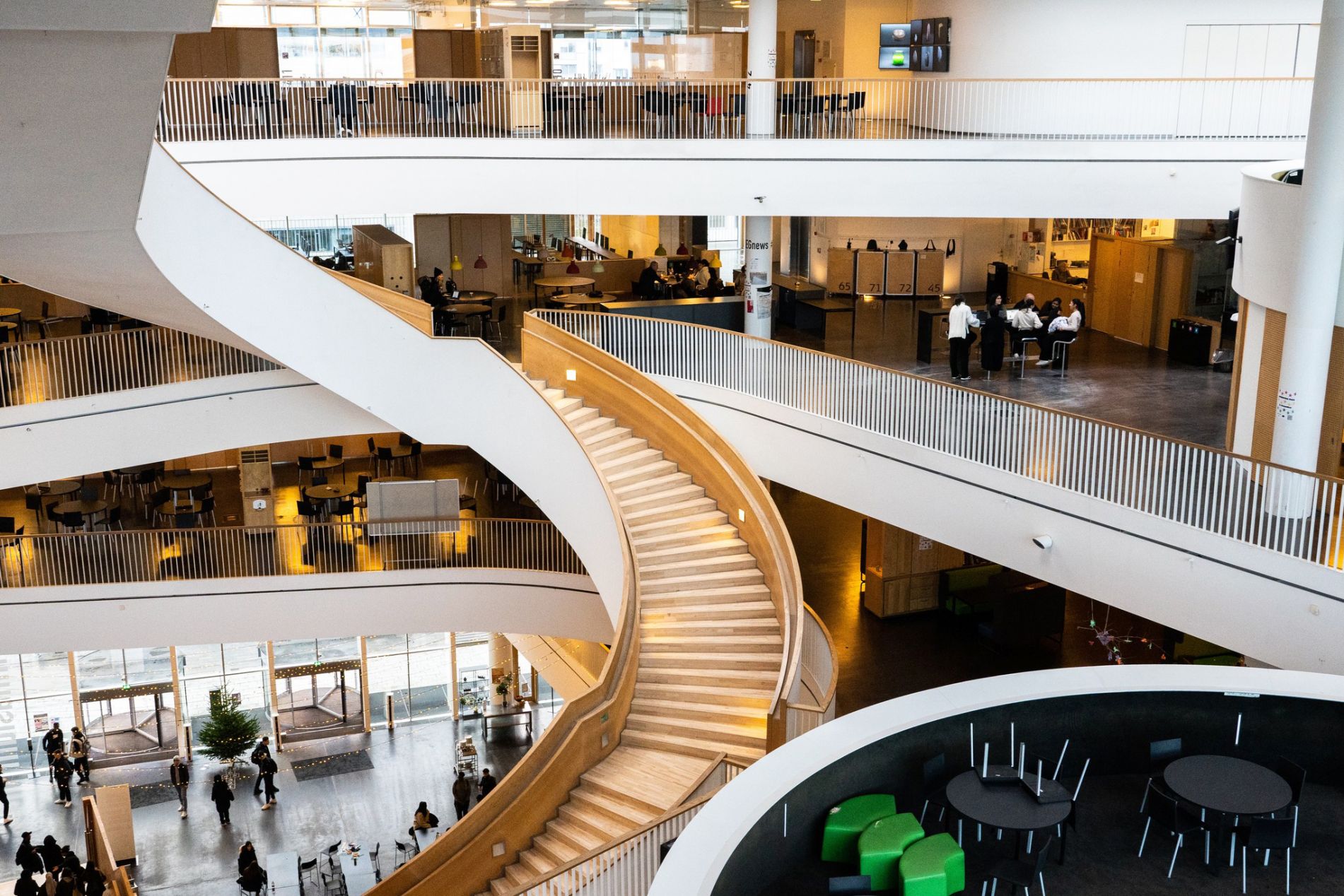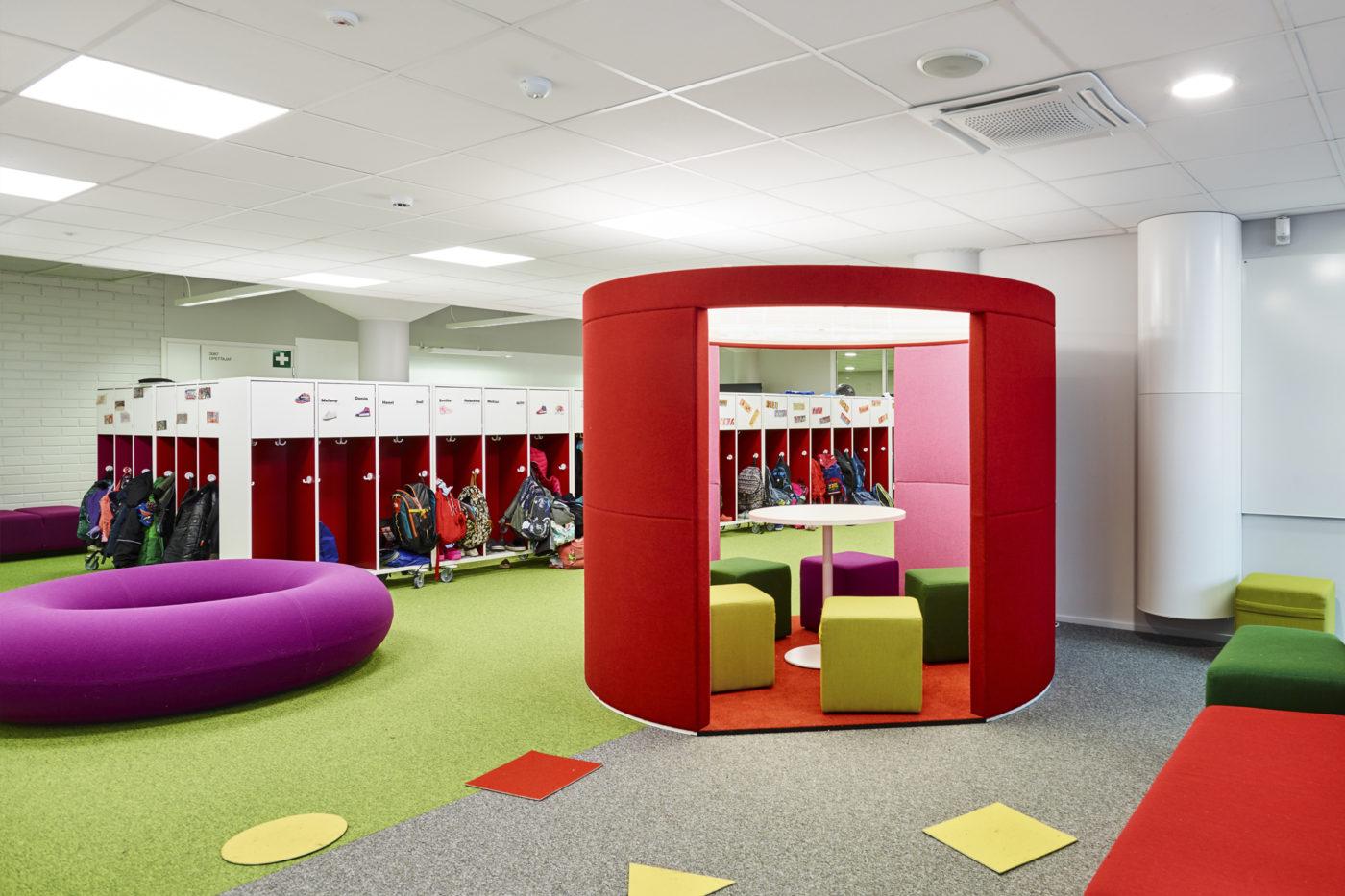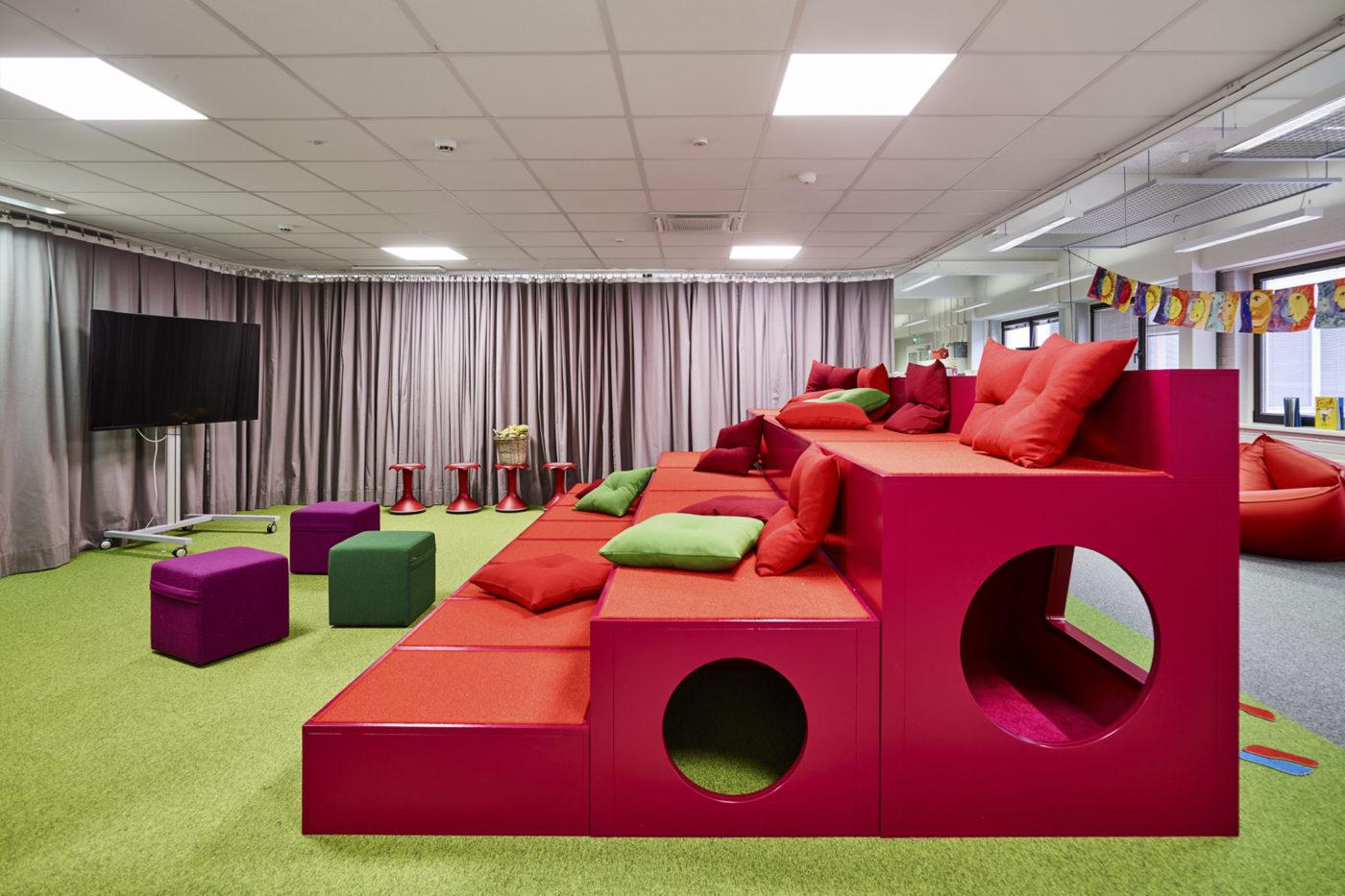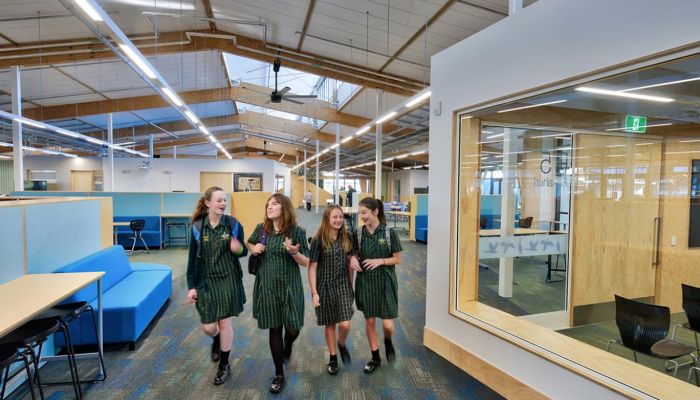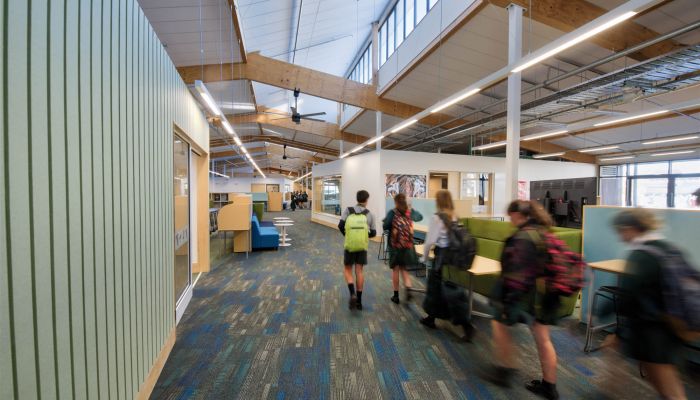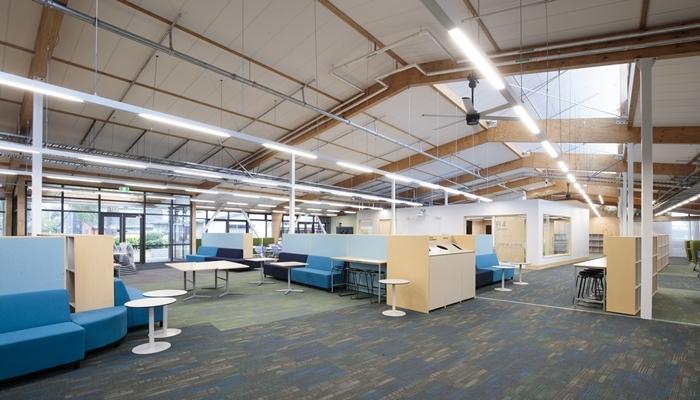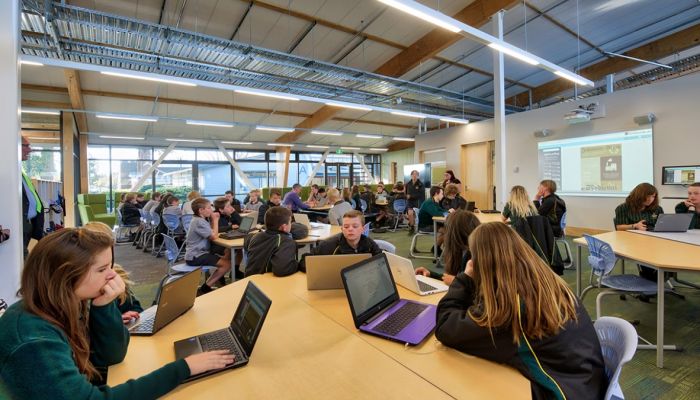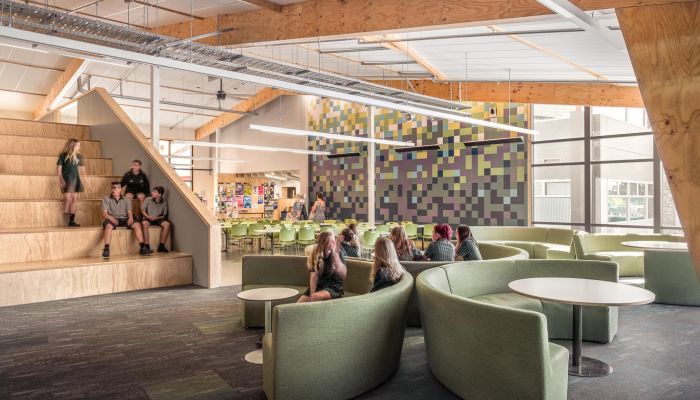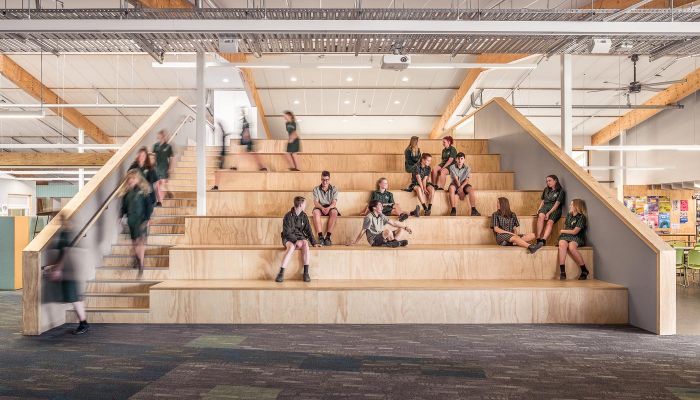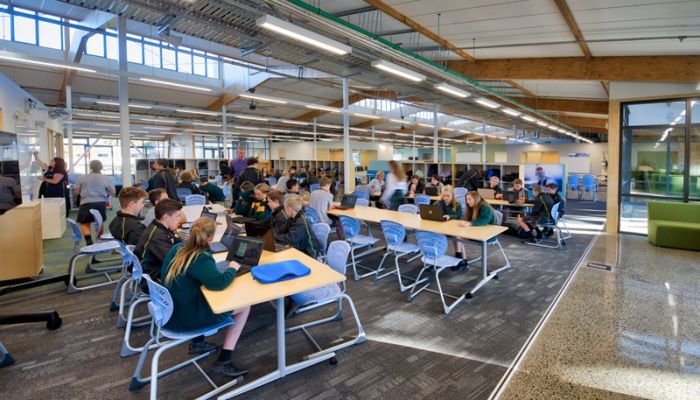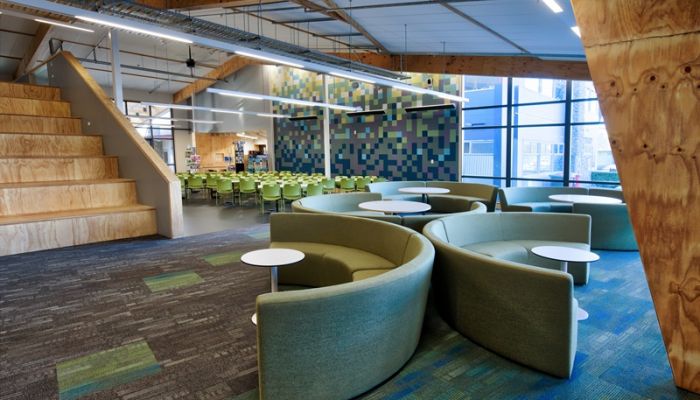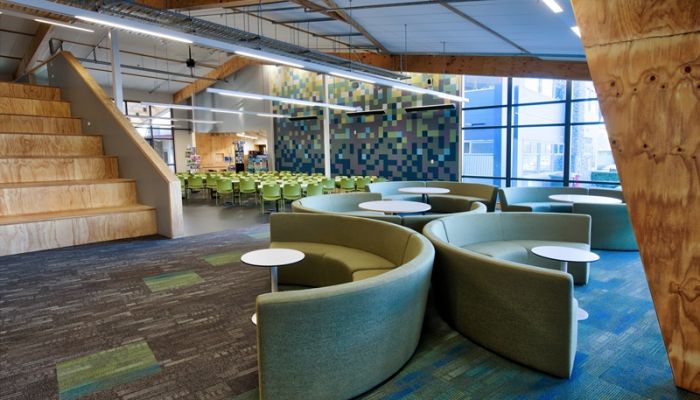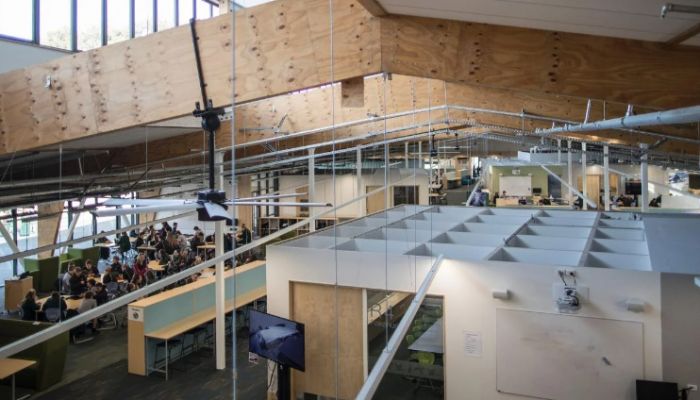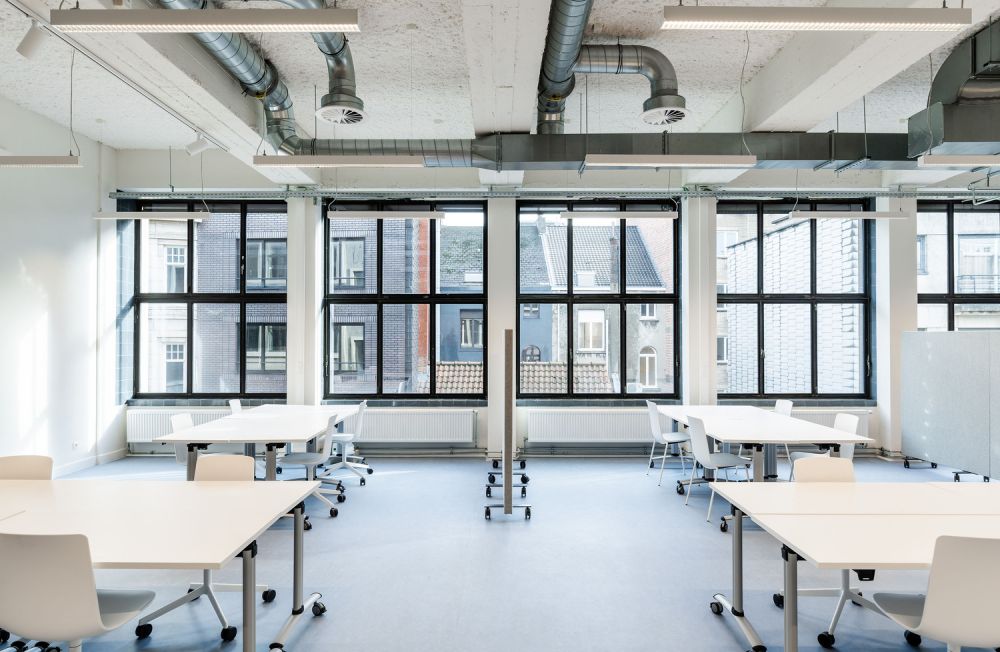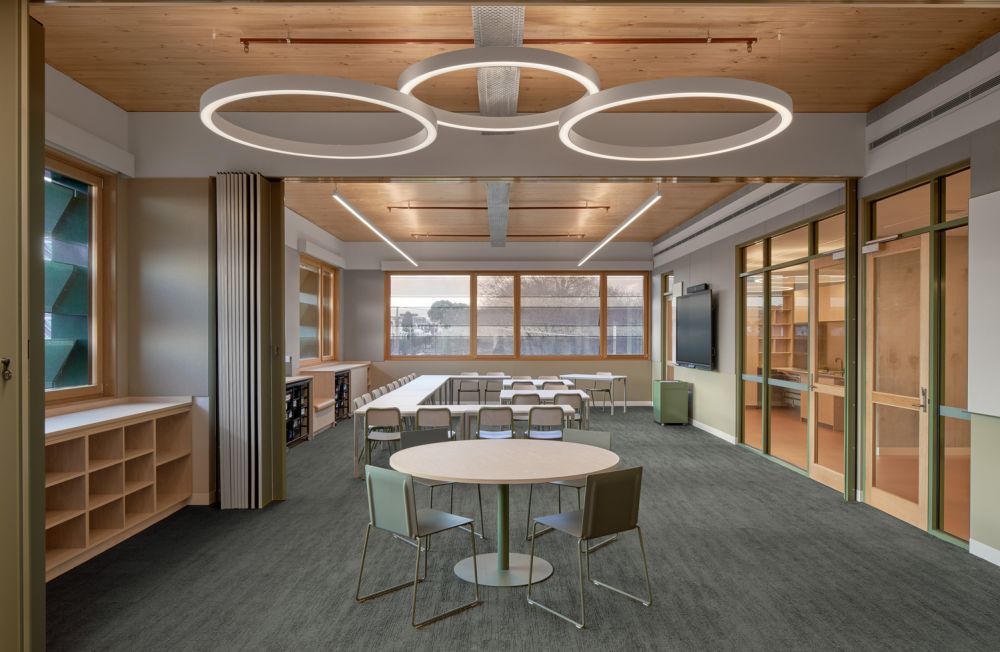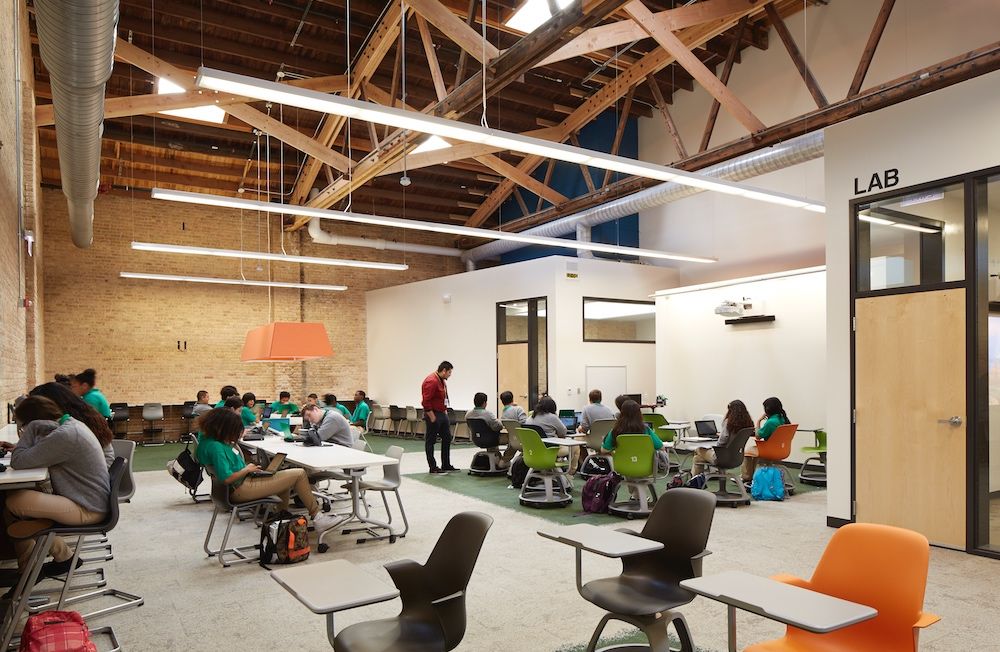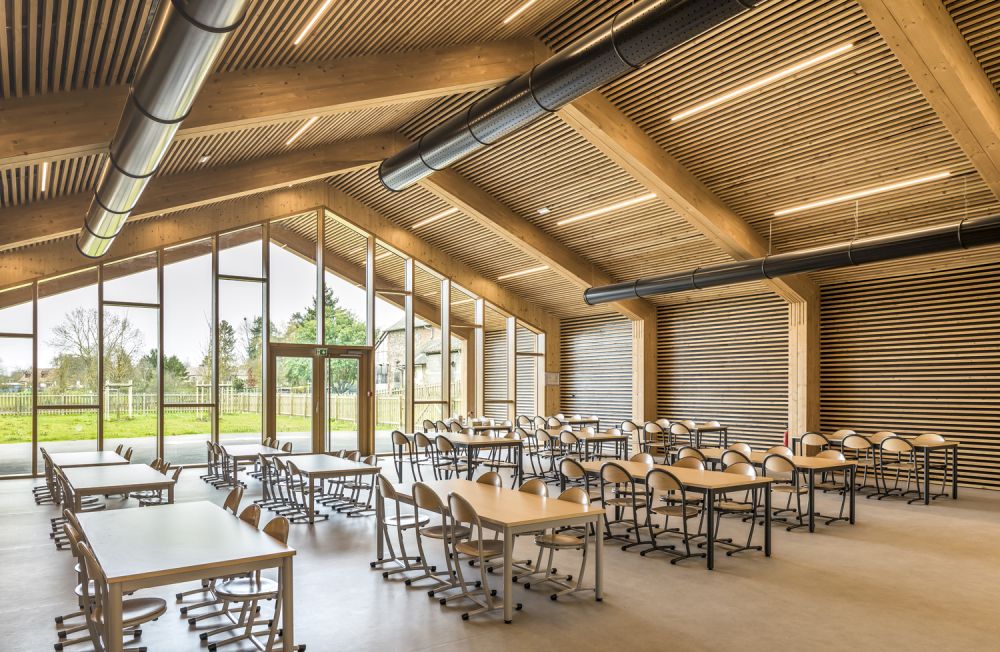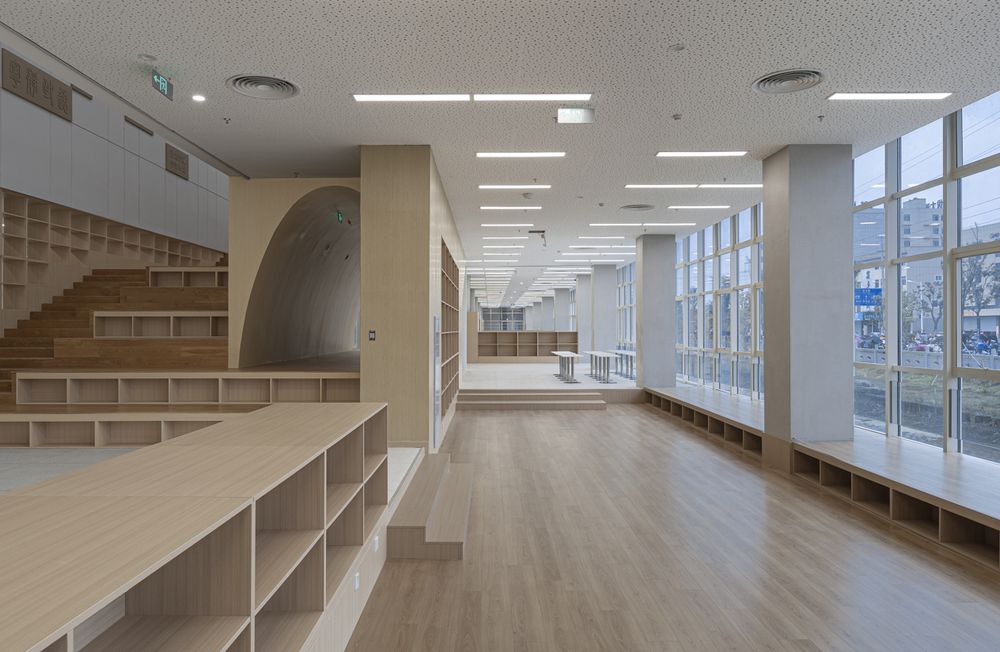Open-plan classrooms are put in contrast with the seemingly outdated system of corridors and subject classrooms. However, the latest studies show that open spaces in schools prevent children from concentrating and receiving information. Were the open classrooms a mistake, and repeated twice? And why are the schools built for open spaces exposed to redevelopment?
Henderson-Hopkins School. Photo: Albert Vecerka / Esto
When the East Baltimore Henderson-Hopkins School opened in Baltimore City in 2014, it was an event for a neighborhood where such institutions had not been constructed for 20 years. The building has won several major awards, including the Education Facility Design Award from the American Institute of Architects. Experts particularly noted the progressive organization of learning spaces. The school had very few traditional classrooms, instead there were five light open spaces created, the so-called “houses”.
But a few years later it became clear that the USD 40+ million project was not working as planned. Teachers did their best to avoid lessons in open areas, especially with large classes, and complained about the children’s underperformance. Some of the “houses” were equipped with temporary partitions, which later became permanent.
Open space, Henderson-Hopkins School. March 2016. Photo from the study by Erkin Özay
This example is far from being the only one. In the 2000s, many countries experienced a craze for open spaces and experimented with their types and educational methods. But after 15-20 years, the “romance” has been replaced by skepticism and disappointment. Let’s try to figure out, why this has happened, which options for open spaces are criticized the least, and whether schools are stepping on old rakes from the 1960s.
Lessons in Creativity, Responsibility and Economy
At first everything seemed to be going well. Many of the schools that have set the fashion for open spaces are in Scandinavian countries. A “classic” example is the Ørestad gymnasium, built in 2007 in Copenhagen. The authors of the project wanted the whole school to be seen as one big flexible classroom. Or as a small town where everyone knows everyone else and goes about their business in cafes, parks, benches and squares.
The four floors of the gymnasium have virtually no interior walls. But each of them is broken down into fairly chamber-like spaces using mobile cabinets, stands, glass partitions and other furniture. There are also a few round elevations with pouffes, the so-called “fat boy areas”. They are designed for relaxation, but children often do their homework or spend part of the study time there. There are also several rooms in the school similar to traditional classrooms, but the walls are transparent. All levels of the building are united by a wide spiral staircase. Walking through it, you can see almost the entire school and its students, which is over a thousand people aged 15–20.
Ørestad Gymnasium, photos from social media
The architecture harmonizes with the model of studies chosen in the gymnasium. Group project work, differentiated and problem-oriented tasks are often used here. At the same time, the school has gone paperless and all materials are in digital format. A teacher fulfils the function of a facilitator, endeavors to support students’ ideas and encourages them to obtain and produce knowledge independently.
So, a school day may start with a general meeting, after which some go to shoot a video, others record a podcast, and still others prepare a project presentation. Architects and teachers believe that the choice of location and work style as well as neighborhood with other classrooms train independence, responsibility, the ability to negotiate and learn from each other. And that the ability to concentrate in such an environment will be useful for young people in the future, because many office spaces are also built on the basis of open spaces.
The example of the Lauttasaari School in Helsinki shows that open planning can be linked to budget economy and redevelopment objectives. One of the Finnish largest primary schools is located on an island. At some point, it was faced with the impossibility of constructing a new building. Adaptations to a nearby holiday house were not within budget. Then the attention was paid to the vacant areas of the neighboring office building…
The school “inherited” open spaces with rows of columns. But no new walls were erected. On the contrary, they adapted the structure of the office open space to a flexible learning environment. Floor, ceiling and some walls were covered with acoustic insulation. Zoning was done with plastic blinds, screens and various furniture. For example, the wardrobes are wheeled and you can assemble a partition out of them. Throughout the day, you can change the size of the zones, their filling and function. To prevent classes from disturbing each other, the school has developed a system of special rules and “silence signs”. For example, they can be used when the class goes to the canteen.
Lauttasaari School, Helsinki. Photo: Innovarch
Flexible Spaces or Places of Noise and Exclusion?
The more experience of designing and using open spaces accumulated, the more divided the feedback was. Adam Voigt, founder of Real Schools Australian project, in his article “I was wrong about open-plan classrooms” recalls his experience of being a principal in a school moving to a co-educational model. It envisioned two teachers working together in the same space where they teach 50 students. It is considered that this system helps both students and educators to learn from each other. Adam and his colleagues studied the recommendations of foreign experts, including those from Finland. Teachers were prepared to work in a way that was new to them, and paired up as efficiently as possible. For example, a recent university graduate was paired with an experienced teacher leader. This made it quicker and easier for her to gain professional experience.
However, Adam admits that there were more problems from this experiment than benefits. “I witnessed noise levels beyond what I believe is conducive to learning, thinking and problem solving. I observed how it was increasingly difficult for the teachers to identify and correct the students’ problem behavior. The situation was exacerbated by class sizes, as the school architects used the open plan as an excuse to reduce the space allotted for each student in each classroom… And I watched our neuro-diverse students and those with a history of trauma suffer.”
The difficulties of learning in open-plan classrooms for children with special needs were also discussed in Scotland in February 2024. Experts said that children with attention deficit disorder and hyperactivity are much better suited not to open spaces but to classic classrooms with walls. Children with autism spectrum disorder would benefit from quiet spaces with seating places creating a sense of chamber and with sensory relief facilities. Besides, if there are “runner” children in the classroom who tend to spontaneously run away from their seat, the lack of physical boundaries can exacerbate the problem.
At times, the rejection of “boundaryless” classrooms occurs at the national or state level. In the early 2010s, for example, the New Zealand Ministry of Education planned to introduce flexible learning spaces to all its schools. However, the reforms were soon given a “reversal”, and the schools themselves are making changes to the projects. The headmaster of Shirley Boys’ High School in New Brighton has rejected a single space for 225 students and nine members of staff. He asked to divide it into three separate rooms for 75 students, and make three sliding glass panels in each of these classrooms.
And Rangiora High School spent more than a million dollars to retrofit a building built in 2017. The building was one of the largest open spaces in New Zealand. The renovation added interior walls to the building and created ten classrooms. The headmaster says he is not seeking to completely reject the original idea. He wants to give teachers a choice rather than forcing them to co-operate by being in a place with fluctuating noise and temperatures.
Rangiora High School, New Zealand. Photo: Peter Meecham, Iain McGregor, Frank J.Visser
In May 2023, the New South Wales Department of Education announced that the state schools would no longer build open-plan coeducational classrooms for multiple classes. Victoria may follow, especially after a University of Melbourne study conducted in local schools from 2016 to 2019. University staff monitored the academic performance and reading rate development of 196 students aged 7–10 years old, comparing results in open- and closed-plan classrooms. It turned out that all participants in the experiment who studied in the open spaces had worse academic performance. Their reading rate was half that of students in the traditional classroom. The noise level was approximately 5.4 decibels, which reduces speech understanding by about 10–15 %. This is a serious problem because children under the age of 10 do not yet have the language skills to help them supplement the teacher’s missed phrases on their own.
The effect of noise levels on speech perception was also studied at Macquarie University in 2014–2015. Four types of classrooms in Sydney kindergartens were compared here, ranging from the classic closed to fully open. Speech perception scores in the most enclosed spaces were 80 %. At the same time, the result was almost independent of the child’s place in the classroom. In a fully accessible open space, children sitting next to the teacher had a speech perception score of 75 %, while those sitting in the back rows – only 25 %.
Step on a Rake of the 60’s or Learn the Lessons?
In fact, this isn’t the first time the open space boom has happened. They were popular in several dozen countries in the late 1950s and 70s. The reasons were the economic crisis after World War II and the desire to reform the education system. The architects were looking for the options on how to reduce the square footage per student without reducing the actual learning space. Educators were revising the hierarchical teacher-student system and looking for new models of teaching. In this way, dual-purpose zones appeared, corridors were combined with classrooms, group lessons of several classes at the same time under the supervision of two teachers.
The configuration of open-plan classrooms and their fate varied from country to country. In the USA, for example, the movement died out by the late 1970s. Virtually all the buildings of that time have either been demolished or renovated. In Portugal, the P3 project by architect Maria do Carmo Matos was popularized. She developed the modules from which a school with two or three centers could be “assembled”. By the mid-1980s, more than 350 schools had been built under the P3 project, and it was difficult to find two identical ones. However, noise levels caused complaints and teachers were not properly trained to work in the new, partly imposed, environment. In the open spaces, additional walls and partitions appeared one after another.
It is interesting to compare these examples with the Japanese experience from a study by Yurika Yokoyama, a professor at the University of Tokyo. He was interested in the effect of classroom architecture on the concentration of primary students. He analyzed 229 classrooms of different layouts in 15 schools in a city near Tokyo. The sample also included a variety of open-plan classroom models. Such spaces emerged in the country’s primary schools in the 1970s. After about 10 years, an additional government funding program was launched. By the end of the 20th century, more than five hundred schools of that kind had been built. Though they have not become the places for experimental pedagogy, they are still used today. Some are completely open, others have partitions partially separating the classroom from the corridor, or sliding screens.
It’s curious that the fully open classroom topped the anti-rating only in terms of the frequency with which the class is distracted by external noise. The most problematic spaces were those with no clear sense of where the classroom ends and the corridor begins. Students are more likely to be distracted in them, and the panels themselves create blind spots where the teacher cannot see the children. If there are pictures hanging on the partitions, it creates an additional “temptation”. Students look at them, see the corridor, and sometimes it becomes an incentive to go for a walk along it. In addition, no configuration of screens or partitions reduced visual stimuli. It turns out that open spaces with diverse zones don’t guarantee a quality learning environment either. Also, the researcher mentions that the flexibility of the layout reduces the flexibility of the lesson itself. Teachers simply cannot include activities that cause noise or odor.
Some countries still claim to have learnt the lessons of 1960s wave. For example, Finland continues to replace classrooms with four walls and rows of desks with more diverse and open spaces. But an acoustic designer is sure to work on every layout. Schools don’t save on sound-absorbing materials and rarely use rectangular spaces, choosing the curved ones. Also, to be successful, the number of students per teacher should be small, and teachers should be supported in preparing lessons for open spaces. But even this positive example discredits some frequent expectations from open spaces. A high-quality open space requires investment of both material and human resources, and is more of an individual than a replicable project.
Photos of open spaces in different schools
Cover photo: «Formula» school by EdDesign LLC
June 2024
